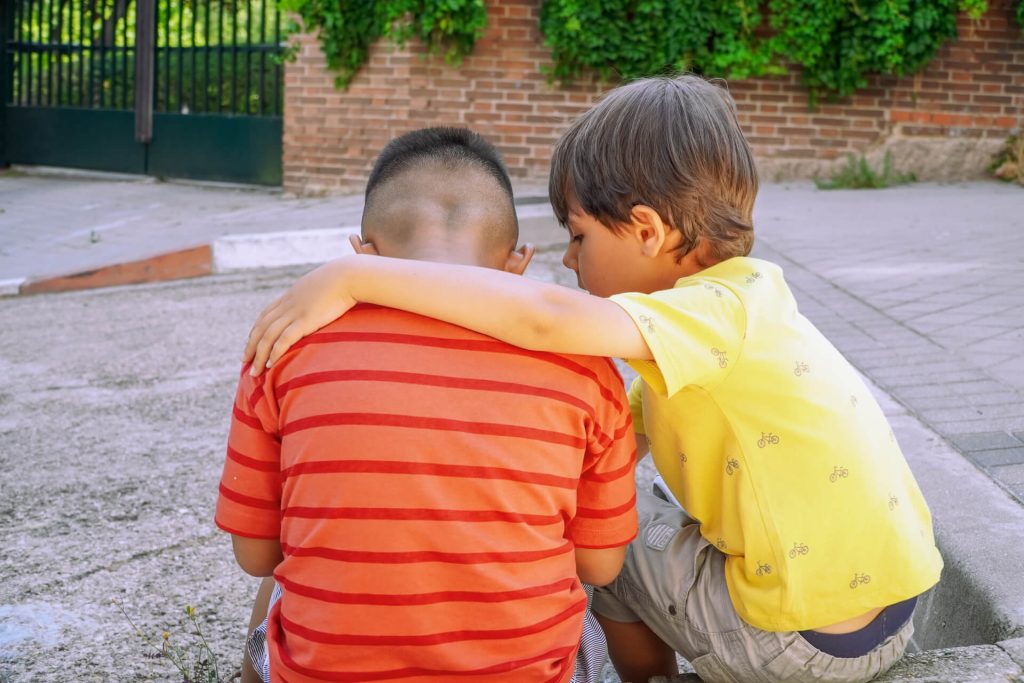As a mother of a boy who is afraid of the dark and doesn't like to be alone, I've learned that the most important thing is to provide the child with a sense of security and understanding. I would tell him stories where he was the brave hero, and I would leave a light on while he went to sleep. Not only that, whenever he wanted to, he could sleep with us, his parents. These small gestures helped him feel safer and face his fears.
Parents teach their children to be cautious and to fear specific dangers, such as fire or crossing the street. In such cases, a dose of fear can be helpful because it helps protect the child from harm. However, children may fear situations or objects that adults do not consider threatening. The sources of fear can change as the child grows. For example, fear of the dark or monsters under the bed can give way to fears of burglary or violence.
Support, don't tease!
Tactics that don't work include teasing the child for being afraid or forcing them to face frightening situations. Help your child cope with fear by taking their feelings seriously, encouraging them to talk about their anxieties, explaining facts, and giving them the opportunity to face their fears at their own pace and with your support.
What to do to help a child overcome fear?
Some children fear insects, some run in panic from dogs, and many children have developed a fear of going to the doctor and dentist. Some fear separation from their parents, while others dread new environments and new groups, such as what awaits them in a new preschool, at training, or in an English class, etc.
1. Conversation and understanding
The first step in overcoming fears in children is conversation. Talk to your child about their fears and listen without judgment. Try to understand what exactly scares them and how they feel. This approach helps the child feel understood and less alone in their fears.
2. Gradual exposure
Gradually exposing the child to their fear can be very effective. For example, if the child is afraid of the dark, you can start by gradually getting them used to a dimmer room, leaving a lamp or nightlight on. As the child feels safer, you can gradually reduce the lighting until they are fully accustomed to the dark.
When it comes to going to the dentist, gradual exposure can involve several steps. The first step might involve just visiting the dentist to see the office and meet the doctor. Next time, the dentist might "take the child for a ride" on the chair or just look at their teeth with a mirror, without any interventions. This approach allows the child to gradually get acquainted with the new situation and reduce their fear. Reward the child with a small prize (e.g., a figurine, sticker) for bravely enduring the visit.
If the child is afraid of dogs, you can gradually introduce them to a gentle dog from the neighborhood. Start by observing the dog from a safe distance, and then, when the child feels ready, allow them to pet the dog in your presence. This way, the child will learn that there is no reason to fear this noble animal. Teach them to always ask the owner if they can pet the dog in the future to avoid unforeseen situations, and advise them not to approach the dog abruptly, but slowly from the front so the dog can see them well. Because dogs have their own fears too :)
3. Stories and games
Stories and play can be powerful tools for overcoming fears. As I told my son stories where he was the brave hero, you can use a similar approach with fairy tales and stories with your child as the main character.
Through play, children can explore their fears in a safe environment. For example, if the child is afraid of insects, you can draw or read books about insects together to better understand them.
4. Preparation for unpleasant situations
Some children fear going to the doctor. Preparation for these situations can reduce fear. Explain to the child what they can expect during the visit and why it's important to see the doctor. You can play "doctor" at home so the child has the opportunity to become familiar with instruments and procedures in a relaxed setting.
5. Encouraging independence
Encouraging independence in children can help overcome the fear of separation from parents or new environments. Gradually leave the child with other family members or friends for shorter periods. Give them praise and support every time they show courage and independence.
6. Favorite teddy bear "guards the fear"
Some children feel safer with certain objects, like a favorite toy or blanket. These items can provide comfort and help the child feel braver in situations that scare them. If the child is afraid of the dark, like my son, a night light or favorite toy (a stuffed animal named Zubić) greatly helps them feel safer.
When to seek professional help?
Sometimes a child's fear is so intense or prolonged that it can interfere with their daily life and development. In such cases, it may be necessary to seek professional help.
- Phobias: An intense fear of specific situations or objects, such as heights, dogs, or water, that lasts for more than six months and seriously interferes with the child's daily activities. Excessive anxiety: When a child constantly worries about different things and these worries are disproportionate to the situation. This can include fears related to school, health, family safety, and other aspects of life.
- Excessive anxiety:: When a child constantly worries about different things and these worries are disproportionate to the situation. This can include fears related to school, health, family safety, and other aspects of life.
- Obsessive-compulsive disorder (OCD): If the child has obsessive thoughts or compulsive actions that are excessive and interfere with daily activities, such as constant hand washing or repeatedly checking if something has been done. If you notice that the child, for example, counts objects because something "bad will happen" otherwise, it might be OCD.
- Social anxiety: An intense fear of social situations, which may include avoiding school, social events, or interaction with peers.
- Panic attacks: Repeated, unexpected attacks of intense fear or discomfort, which may include symptoms such as a rapid heartbeat, sweating, trembling, and a feeling of losing control.
If you notice any of these symptoms in your child, it is important to consult a pediatrician, child psychologist, or another mental health professional. Timely intervention can help the child overcome their fears and anxieties, allowing for healthy and happy development.
Conclusion
It is important to remember that every fear, no matter how irrational it may seem, is real and serious for the child. Our role as parents is to support our children, understand them, and provide them with the tools to overcome these fears.
Through stories, play, gradual exposure to what the child fears, and with lots of love, we can help our children grow into brave and independent individuals. My experience with my son, who is now much braver thanks to our joint efforts, shows how important and effective these strategies are.





